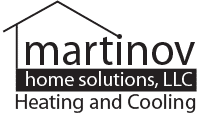Common Indoor Allergens & Pollutants: Should I Get an Air Purifier?
January 14, 2025
Categories: Indoor Air Quality
Do you find yourself sneezing more often inside your home than when you’re outdoors? If so, it could be a sign that your home is under attack by common indoor allergens and pollutants. Things like dust mites, pet dander, mold spores, and even chemicals from cleaning products can seriously affect your health, causing everything from sneezing, coughing, and itchy eyes to problematic asthma or respiratory problems. Thankfully, you don’t have to endure these frustrating symptoms — you can combat allergens and pollutants with an air purifier!
The Most Common Indoor Allergens and Pollutants in Your Home
It’s easy to assume that outdoor air is more polluted than indoor air, but the truth may surprise you. According to the EPA, the air inside our homes can be up to five times more polluted than the air outside. What’s behind this frustrating problem? Take a look at the most common allergens and pollutants floating in our homes’ air:
- Dust Mites: Dust mites thrive in carpets, upholstery, and bedding. These microscopic critters are a leading cause of allergies and can trigger sneezing, coughing, and itchy eyes.
- Pet Dander: While we love our furry friends, their skin flakes, fur, and saliva can become airborne allergens that exacerbate allergy symptoms and asthma.
- Pollen: Pollen from trees, grass, and weeds often sneaks indoors through open windows, doors, or on clothing. For those with seasonal allergies, pollen can create a year-round struggle.
- Mold Spores: Mold grows in damp areas, such as basements, bathrooms, and kitchens. When mold spores are inhaled, they can cause respiratory irritation and worsen asthma.
- Volatile Organic Compounds (VOCs): VOCs are chemicals found in paint, household cleaners, and air fresheners. Over time, exposure to VOCs can lead to headaches, nausea, and long-term health issues.
- Smoke and Cooking Fumes: Cigarette smoke, wood-burning stoves, and cooking fumes can fill your home with harmful particles and lingering odors.
Each of these pollutants can have a lasting impact on your health, but the good news is that you can remove them with an air filtration system designed to purify your indoor air.
How an Air Purifier Can Help Combat Indoor Allergens and Pollutants
Installing an air purifier in your home can significantly improve indoor air quality and reduce symptoms caused by common indoor allergens. How is this possible? Well, air purifiers work by filtering out airborne particles, odors, and pollutants, ensuring the air you breathe is clean and fresh.
Here’s a closer look at how you could benefit from installing an air filtration system:
Eliminates Allergens
A high-quality air purifier can capture and remove dust mites, animal dander, pollen, and other allergens. High-efficiency particulate air (HEPA) filters, for instance, trap 99.97% of particles as small as 0.3 microns. This means cleaner air and fewer allergy and asthma symptoms!
Reduces Mold Spores
Air purifiers like the Fresh-Aire UV Air Purifier use UV-C light to kill mold spores, bacteria, and viruses. This is especially useful in areas prone to humidity, such as basements and bathrooms.
Neutralizes Odors
Whether you’re dealing with smoke, cooking fumes, or pet odors, an air purifier with activated carbon filters can help remove unpleasant smells and keep your home smelling fresh.
Removes Harmful VOCs
If you use cleaning products or have newly painted walls, VOCs may be lingering in your air. Air purifiers equipped with carbon filters can absorb these chemicals, making your indoor environment healthier.
Kills Bacteria and Viruses
Advanced air purifiers use innovative technology to break down bacteria, viruses, and other pathogens, reducing the spread of illness and creating a cleaner home environment.
Improve Your Indoor Air Quality With Martinov Home Solutions
You don’t have to suffer from indoor allergies any longer. By installing an air purifier into your air conditioning and heating system, you can create a healthier, cleaner home for you and your family. Whether you’re dealing with poor indoor air quality from pet dander, pollen, or mold spores or simply want to prevent any problems before they occur, we’re here to help with our customized indoor air quality solutions. With options like the iWave Air Purifier and Fresh-Aire UV Air Purifier, we’ll help you find the perfect system to reduce the chances of indoor air pollution in your home.
Don’t wait to breathe easier — contact our experts today! We’ll help you say goodbye to indoor allergies and hello to fresh, clean air.
Frequently Asked Questions About Indoor Allergens & Air Quality
How do I know if my home’s air quality is poor?
Signs of indoor air pollutants and poor air quality include:
- Persistent allergies
- Odors
- Dust buildup
- Respiratory discomfort
IAQ testing can provide a clear answer about the type of allergens affecting your home. So, call our team today to schedule an appointment.
Does indoor air quality affect sleep?
Yes, poor indoor air quality can negatively impact sleep by causing congestion, allergies, and respiratory discomfort.
Can an air purifier remove odors from my home?
Yes, air purifiers with activated carbon filters can effectively remove odors from smoke, pets, and cooking.
How often should I replace the filters in an air purifier?
Filters should typically be replaced every 6-12 months, depending on usage and air quality.

